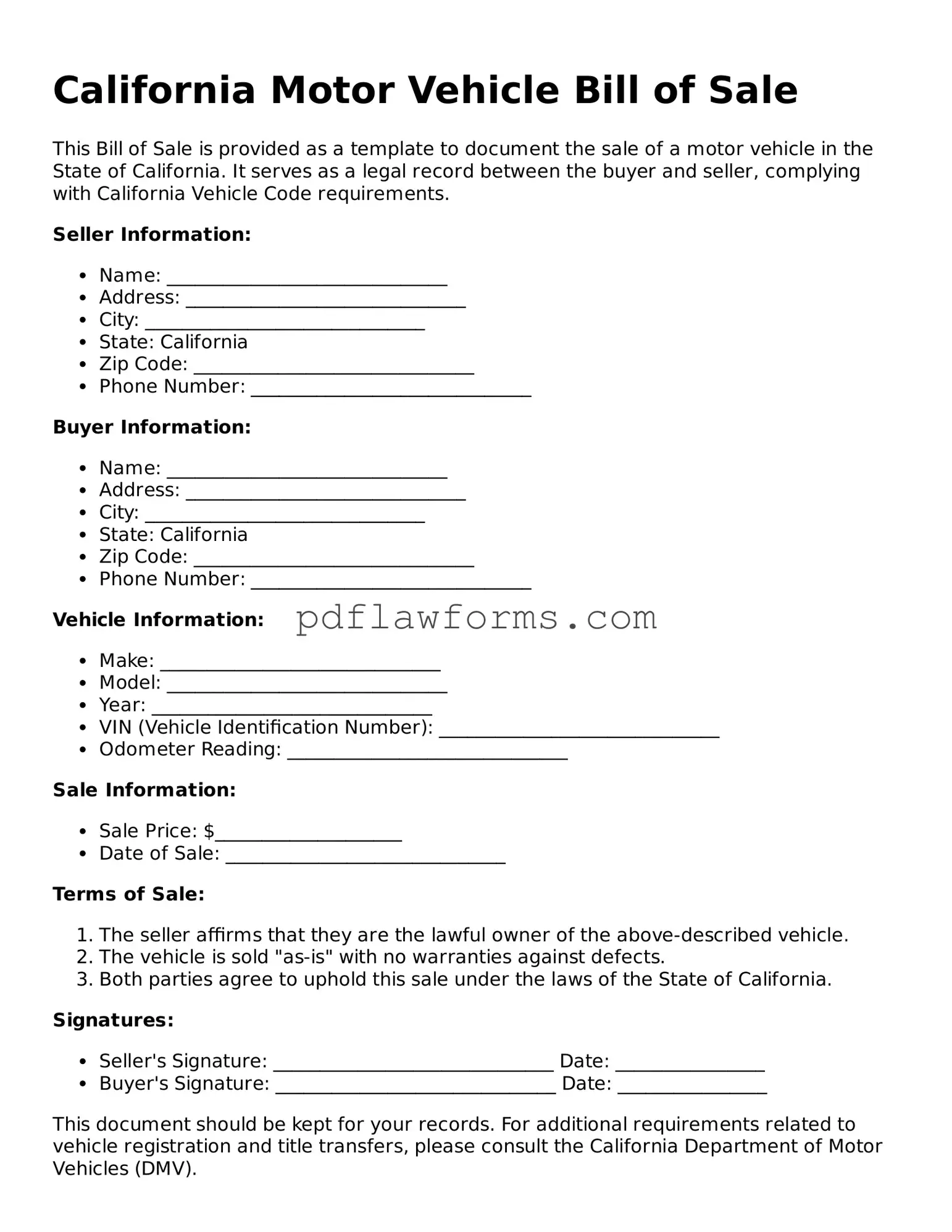Filling out the California Motor Vehicle Bill of Sale form can be a straightforward process, but many people make common mistakes that can lead to complications down the road. One frequent error is neglecting to provide complete information about the vehicle. This includes the Vehicle Identification Number (VIN), make, model, and year. Omitting any of these details can create confusion and may hinder the transfer of ownership.
Another common mistake is failing to accurately record the sale price. This figure is essential not only for the buyer and seller but also for the Department of Motor Vehicles (DMV) for tax purposes. If the sale price is left blank or incorrectly stated, it can lead to issues when the buyer attempts to register the vehicle.
People often overlook the importance of signatures. Both the seller and the buyer must sign the Bill of Sale. Without these signatures, the document may not be considered valid. Additionally, if the seller is not the registered owner, they must have the legal authority to sell the vehicle, which often requires additional documentation.
Another mistake is not dating the document. A Bill of Sale should include the date of the transaction. This date is crucial for establishing when the ownership transfer occurred, which can affect liability and registration issues.
Some individuals forget to include any relevant disclosures about the vehicle’s condition. If there are known issues, such as mechanical problems or previous accidents, failing to disclose this information can lead to disputes later. Honesty in this area helps build trust between the parties involved.
Many people also make the mistake of not providing contact information. Including phone numbers or email addresses can facilitate communication if questions arise after the sale. This simple step can prevent misunderstandings and foster goodwill between the buyer and seller.
Another issue arises when people use outdated forms. Always ensure that you are using the most current version of the California Motor Vehicle Bill of Sale form. Laws and requirements can change, and using an outdated form may lead to complications.
People sometimes forget to keep a copy of the completed Bill of Sale for their records. This document serves as proof of the transaction and can be useful if any disputes arise in the future. Both parties should retain copies for their own protection.
Lastly, individuals may not realize that the Bill of Sale is not a substitute for a title. While it is an important document for the sale, the title must also be properly transferred to complete the ownership change. Failing to address both documents can lead to legal complications down the line.
By being aware of these common mistakes, individuals can navigate the process of completing the California Motor Vehicle Bill of Sale form more effectively. Attention to detail can make a significant difference in ensuring a smooth transaction.
